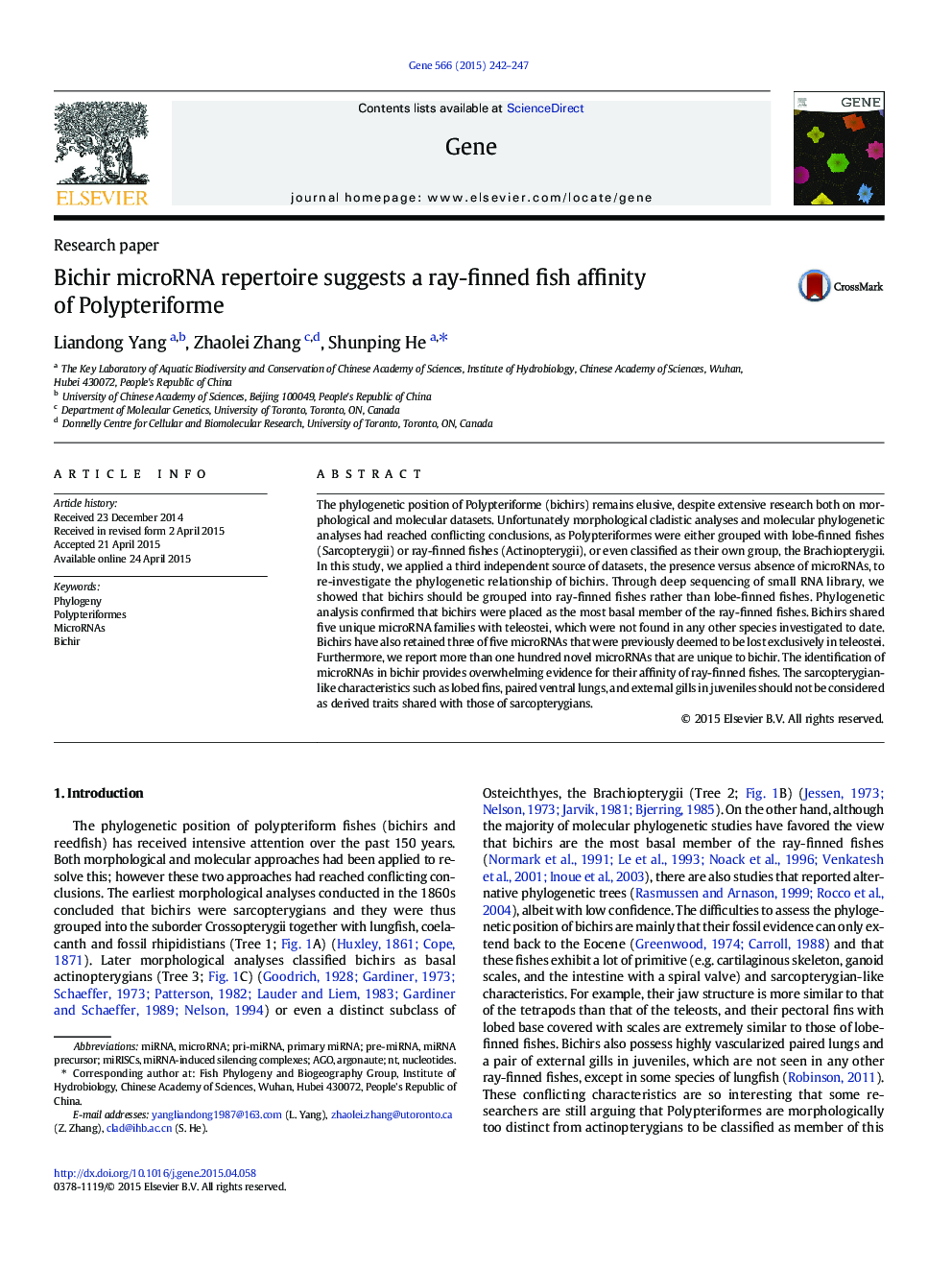| Article ID | Journal | Published Year | Pages | File Type |
|---|---|---|---|---|
| 2815613 | Gene | 2015 | 6 Pages |
•A total of 228 known miRNA were identified in the bichir genome.•A total of 107 novel miRNAs were identified.•MiRNAs in bichir provides evidence for their affinity of ray-finned fishes.
The phylogenetic position of Polypteriforme (bichirs) remains elusive, despite extensive research both on morphological and molecular datasets. Unfortunately morphological cladistic analyses and molecular phylogenetic analyses had reached conflicting conclusions, as Polypteriformes were either grouped with lobe-finned fishes (Sarcopterygii) or ray-finned fishes (Actinopterygii), or even classified as their own group, the Brachiopterygii. In this study, we applied a third independent source of datasets, the presence versus absence of microRNAs, to re-investigate the phylogenetic relationship of bichirs. Through deep sequencing of small RNA library, we showed that bichirs should be grouped into ray-finned fishes rather than lobe-finned fishes. Phylogenetic analysis confirmed that bichirs were placed as the most basal member of the ray-finned fishes. Bichirs shared five unique microRNA families with teleostei, which were not found in any other species investigated to date. Bichirs have also retained three of five microRNAs that were previously deemed to be lost exclusively in teleostei. Furthermore, we report more than one hundred novel microRNAs that are unique to bichir. The identification of microRNAs in bichir provides overwhelming evidence for their affinity of ray-finned fishes. The sarcopterygian-like characteristics such as lobed fins, paired ventral lungs, and external gills in juveniles should not be considered as derived traits shared with those of sarcopterygians.
